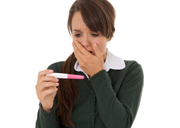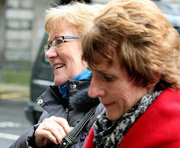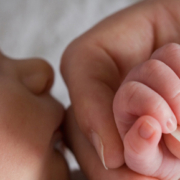Back to the backstreets with abortion
 After successful lobbying by abortion providers, women in Scotland are now allowed to take the abortion pill at home, in a first for the UK. Since 83% of abortions in Scotland use medical methods (abortion pills) this will have a significant impact.
After successful lobbying by abortion providers, women in Scotland are now allowed to take the abortion pill at home, in a first for the UK. Since 83% of abortions in Scotland use medical methods (abortion pills) this will have a significant impact.
I’ve recently blogged on this change in Scotland, citing medical concerns with allowing women to take the abortion drug misoprostol in their own homes, as well as highlighting the ideology behind the change. However, as I’ve researched these blogs, I’ve realised that for abortion campaigners this is just a ‘step in the right direction’ towards all medical abortions in the UK being carried out on a fully at-home basis.
As I have spent time reviewing the physical and psychological costs, and dangers, of taking abortion pills at home, I have begun to realise how ironic it is that we are coming full circle and are returning once again to having abortions taking place in homes, or perhaps friend’s homes, or perhaps schools, or colleges, or in the house of an acquaintance or … why not in a park or other so-called ‘back street’?
Because once an abortion pill is no longer administered and taken in a clinic under medical supervision then, whatever campaigners claim, there is absolutely no control over where a pill is taken. Or when. Or by whom. Or if it is taken freely or under coercion.
Of course it will be countered that home medical abortions are much safer now than in the past. But I’ve shown in previous posts (here and here) that complications from medical abortions are common, not rare, according to official criteria, and the regimen can take longer and be much bloodier and much more painful than advertised. Indeed the Scottish guidance (but not the law) says a woman must have another adult with her and the pill must only be taken up to ten weeks gestation, thereby acknowledging it’s really not such a straightforward procedure.
In the UK we have poor data collection (so complications are often not linked to abortion) but in countries where data collection on abortions is better, we know that complications after medical abortion are four times higher than after surgical abortion – 20 percent compared to 5 percent. These complications include haemorrhaging in approximately one out of six women (15.6 percent) while more than three out of every 50 women (6.7 percent) had fetal tissue left inside, most of whom (5.9 percent) required surgery to get the tissue out. In one UK study over 50% of women needed subsequent surgical intervention!
Added to this is the increased potential for emotional trauma when one’s own home (or wherever) becomes the place of one’s abortion and women can see – and have to flush away – the baby.
We are not talking about small numbers of abortions here. In 2016 in Scotland there were 7,926 medical abortions while the number in England and Wales was 107,873. If we assume a complication rate of say 20 percent of 115,799 medical abortions, that is more than 23,000 women per year with complications, and this is with some medical supervision!
Any decriminalisation of abortion would clear the way for all medical abortions to take place outside of medical supervision, by removing the 1967 Act’s requirement that abortion take place in a hospital or other ‘place approved [for abortion]’.
Readers who still think my title ‘Back to the back streets’ is overblown hype should consider the longer-term direction of travel, as campaigners push for less regulation of abortion pills.
Given the growing availability of abortion-inducing drugs distributed through illegal websites that circumvent regulations, what will stop women obtaining abortion pills off the internet? Currently in the US there are already at least 86 websites from which the abortion pill regimen can be ordered online, without a medical prescription.
It will not be long before abortion starts on a smart phone. A girl can be in her bedroom at any time of the night, take a pregnancy test, realise she is pregnant, go on her smartphone and in 15 seconds be connected to an abortion provider who will ship her the abortion pills. They’ll be aborting in their bedrooms and flushing their babies down the toilet. That is the reality of abortion in the not so distant future. It will not be because these girls and women do not have access to medical facilities but because they don’t want others to know about the abortion and because they will be fed the line that it is safe, quick and easy.
But ordering powerful drugs off the internet poses real dangers. A recent paper published by Contraception sought to demonstrate the safety of purchasing abortion pills online, but their findings showed quite the opposite. For a start, all of the pills were successfully ordered without needing a prescription or any medical documents and none of the packages received had any instructions! Packages were damaged in shipment, and incorrect dosages of the drugs were sent, mostly too low a dose (not that a woman or girl receiving the pill would know this).
Showing little concern for the health and safety of women, or for the importance of taking correct doses at the right times and gestation, the researchers concluded: ‘We encourage reproductive health providers, advocates and policy makers to think creatively about how the internet might be useful for enhancing access to safe and effective abortion.’
But with no prescription required by such websites, and no medical oversight at all, the safety nets in place to protect women are gone. Those who profit are the pill manufacturers and providers, as well as sex traffickers and disgruntled boyfriends. Already stories of such abuse have emerged from London, New York, Kansas, Florida, Wisconsin and we can only expect to hear more cases.
Wikipedia defines an unsafe abortion as ‘the termination of a pregnancy by people lacking the necessary skills, or in an environment lacking minimal medical standards, or both.’ And it states that ‘an illegal abortion may be called a back street abortion.’ In a further ironic twist, most people think that unsafe, illegal abortions only take place now in developing countries yet by this definition, self-administered home abortions, with no medical oversight, some using illegal drugs off the internet, takes us into a new era of unsafe, illegal ‘back street’ abortions in the ‘developed’ world.












Leave a Reply
Want to join the discussion?Feel free to contribute!